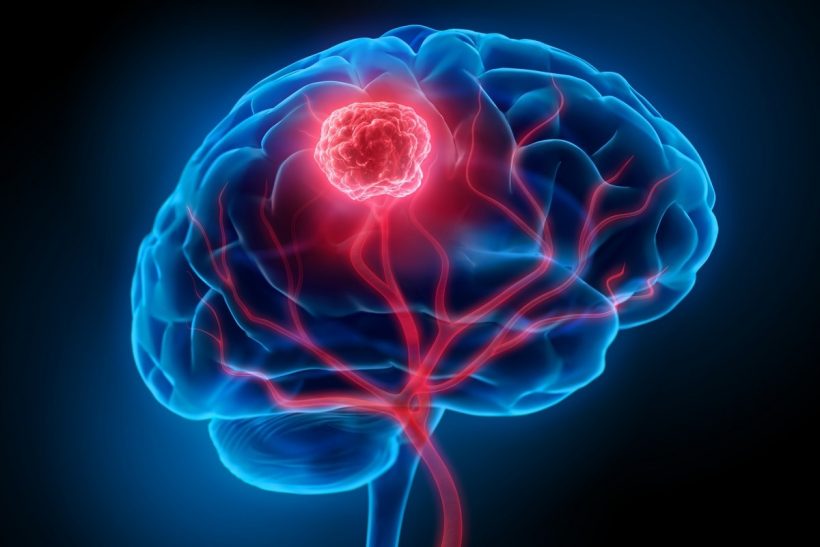https://alternative-medicine-ny.com/top/how-well-does-voltaren-gel-work/
An overview of brain metastasis
In vivo selection of metastatic brain cells
Genetically engineered mouse models (GEMM)
Challenges
Conclusions
References
Further reading
The metastasis of certain cancers to the brain poses a significant challenge to oncologists looking to eradicate these tumors. The complexity of the blood-brain barrier (BBB) and the aggressive cancers that can penetrate the central nervous system (CNS) often limit the effectiveness of current therapies.

Image Credit: peterschreiber.media/Shutterstock.com
As a result, many researchers worldwide have turned to various in vitro and in vivo models of brain metastases to better understand how these cancers migrate to the brain, as well as what treatments have a promising future in the clinic.
An overview of brain metastasis
When a local tumor spreads to different organs, it becomes a systemic disease that is often much more difficult to control through therapeutic interventions. Unfortunately, several different cancers will often travel to the CNS, with brain metastases accounting for up to 80% of all brain tumors. Although lung and breast cancers are the most common causes of brain metastases, other cancers, including melanoma and renal cancer, are also often associated with metastatic dissemination to the CNS.
One of the biggest targets for treating brain metastases is the BBB, as most systemic chemotherapeutic agents cannot penetrate this barrier and reach the tumor. The use of radiation treatment for brain tumors is also associated with certain limitations, as this therapeutic approach can irreversibly limit brain plasticity and evolve into radiation necrosis, a potentially deadly complication, and cranial radiotherapy.
Due to the lack of available and effective treatments, cancer patients who have been diagnosed with brain metastases often face a dismal prognosis that is associated with increased morbidity, mortality, and cost of treatments, thereby leaving palliative care to be the only treatment choice for many patients with this stage of cancer.
In vivo selection of metastatic brain cells
One of the primary approaches to studying brain metastasis is the development of specific cell line clones capable of reaching the brain. These cell lines are developed through an in vivo selection strategy, wherein the parental cancer cell line is injected into a mouse through the intracarotid or intracardiac route.
Any cancer cells that successfully reach the brain of the injected mice are then recovered and cultured. Typically, this in vivo selection process will be repeated multiple times to increase the efficacy of the selected cancer cells in reaching the brain. The final cloned cell line is typically termed a brain metastatic (BrM) derivative of the parental cell line.

Image Credit: Nemeziya/Shutterstock.com
Once the BrM cell line has been successfully cultured, it can be reintroduced into mouse models through the aforementioned systemic injections of intracardiac or intracarotid routes, as well as through local intracranial injections or orthotopic approaches. Notably, the systemic inoculation of BrM cells most closely resembles the true brain metastasis process, as it requires the cells to survive in circulation after injection, penetrate the BBB, and colonize within the brain.
Genetically engineered mouse models (GEMM)
GEMMs are created by deleting tumor suppressor genes or activating oncogenes that are poorly metastatic. To date, two GEMMs of melanoma have been reported to generate brain metastasis as a result of the activation of the Ret oncogene and activation of AKT1, respectively.
In addition to GEMMs for studying the brain metastasis of melanomas, another GEMM that was created by the inactivation of Trp53 and Rb1 has also been developed to study the metastasis of small cell lung cancer to the brain. Aside from the brain, other organ targets of this GEMM include the bones, adrenal glands, ovaries, and liver.
Challenges
The experimental models of brain metastasis are associated with several advantages. For example, these methods allow researchers to control the number of cells delivered to the brain, which often results in a relatively uniform size of metastases among injected mice.
Despite these advantages, these preclinical models of brain metastasis are also associated with several limitations. For example, although the intracardiac injection of tumor cells circumvents the lungs, it can also allow tumor cells to reach other organs and the brain as they travel through arterial circulation. Thus, if the injected cells reach other tissues such as the liver or bone marrow, this organ may become the primary site of concern instead of the brain.
Although the intracranial injection of tumor cells provides a direct route for the implantation of tumor cells, it is a much more complex process requiring specialized equipment. Furthermore, this route also bypasses the earlier stages of the metastatic cascade that could be targeted by certain treatment strategies to reduce the occurrence or size of brain metastases.
Conclusions
Despite the availability of certain preclinical models, research on brain metastases remains challenging. Nevertheless, significant progress has been made in developing specific models to study metastatic cancers like triple-negative breast cancer and melanomas. Furthermore, optimizing these models has also supported research projects on various treatment approaches capable of reducing the clinical impact of these aggressive cancers in patients.
References
- Masmudi-Martin, M., Zhu, L., Sanchez-Navarro, M., et al. (2021). Brain metastasis models: What should we aim to achieve better treatments? Advanced Drug Delivery Reviews 169; 79-99. doi:10.1016/j.addre.2020.12.002.
- Nakhjavani, M., Samarsinghe, R. M., & Shigdar, S. (2022). Triple-negative breast cancer brain metastasis: An update on druggable targets, current clinical trials, and future treatment options. Drug Discovery Today. doi:10.1016/j.drudis.2022.01.010.
- Valiente, M., Ahluwalia, M. S., Boire, A., et al. (2018). The Evolving Landscape of Brain Metastasis. Trends in Cancer 4(3); 176-196. doi:10.1016/j.trecan.2018.01.003.
Further Reading
- All Brain Metastases Content
- What are Brain Metastases?
- Brain Metastases Diagnosis and Treatment
- Brain Metastases Incidence Symptoms and Causes
Last Updated: Jun 20, 2022

Written by
Benedette Cuffari
After completing her Bachelor of Science in Toxicology with two minors in Spanish and Chemistry in 2016, Benedette continued her studies to complete her Master of Science in Toxicology in May of 2018.During graduate school, Benedette investigated the dermatotoxicity of mechlorethamine and bendamustine; two nitrogen mustard alkylating agents that are used in anticancer therapy.
Source: Read Full Article
